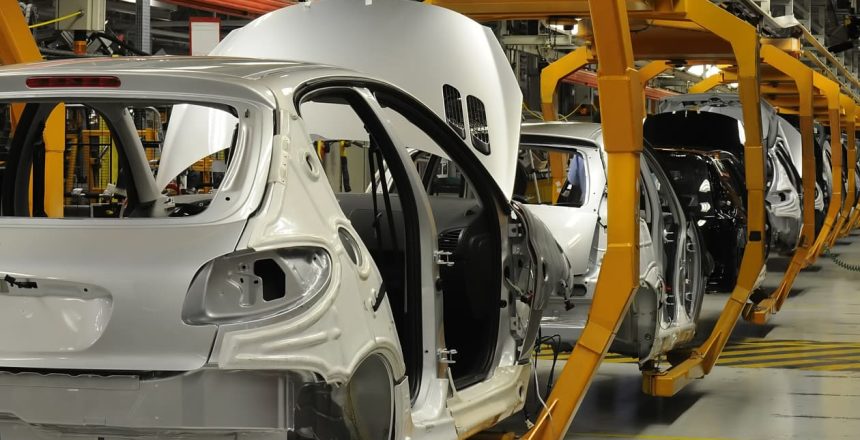Changes could be in store for car buyers in 2022 and the years to come
Key takeaways
- Supply-chain issues are forcing the automotive industry to evolve
- Manufacturers and buyers will have to adapt
- There could be changes in consumer buying habits
- Shopping in other cities and states could become the norm
There’s no doubt the automotive industry is experiencing a transitional period as it navigates production delays, reduced inventory, and price increases. The result is an unpredictable market that could see significant changes over the next few years.
Gas prices and environmental concerns could also push the industry away from internal-combustion engines while embracing a future with reduced emissions and less reliance on fossil fuels. We’re already seeing certain trends accelerate in 2022, leading to questions about how the automotive industry will look for the rest of this year and into the future.
Here’s a look at 2022 auto-industry trends to monitor.
Fewer models and features available
With global supply-chain problems remaining unresolved, manufacturers will struggle to produce full vehicle lineups in 2022.
These supply-chain issues will particularly affect the luxury-car market, which is heavily reliant on semiconductor chips and rare parts that are nearly impossible to find globally. Other manufacturers might also reduce the number of vehicles they’re producing to retain components for more popular models.
Some manufacturers will have to scale back available features on specific models to reduce their semiconductor usage. Nonessential features like heated seats, wireless charging, parking assistance, and automated headlights might become unavailable in many new cars, potentially making used cars that have these features more desirable.
Used cars will retain their value
In the past, new vehicles depreciated substantially once you drove them off the lot. However, supply-chain issues impacting new-car construction are straining used-vehicle markets and triggered price increases.
While used-car prices are slowly reducing in 2022, inventory remains tight; these prices aren’t expected to plummet to pre-pandemic levels anytime soon. There’s also a chance that used-vehicle prices will rebound in the summer as demand increases and stock remains relatively low.
Classic cars could be popular
Americans aren’t buying new sports cars or sedans frequently, as SUVs and crossovers are responsible for over 50% of car purchases, and pickup trucks make up about 20% of the market. The remaining 30% of vehicle sales are spread out over hatchbacks, minivans, coupes, and sedans.
The Toyota Camry is the only car among the top 10 new vehicles sold in 2022, a trend that’s unlikely to change soon. People are still buying cars; they’re just looking at classic vehicles not available through dealerships.
It might surprise you to learn that some sports cars from the 1990s and early 2000s are considered vintage. Gen X and Millennial buyers are purchasing these vehicles at auction for inflated costs, much like Baby Boomers did with cars from their youth in the 1980s and ’90s.
Keep in mind that many classic cars from the ’90s and early 2000s are used, fully depreciated vehicles that have just recently come back into style. Therefore, they might not be roadworthy, and you’ll need a car-shipping carrier for transportation.
Prices will rise
Lack of inventory brought new and used car prices to incredible heights in December 2021, though things have started to level off a bit. However, this leveling might not be permanent: the demand for personal vehicles is increasing, perhaps due to a lack of comfort regarding the end of the CoViD-19 pandemic.
Research by the American Public Transportation Association suggests ridership was at just 60-65% of its pre-pandemic levels in April 2022. While that number is up significantly from January 2022, it shows that people aren’t excited about riding on crowded buses and trains, despite many workplaces mandating a return to the office.
Many people who used public transportation when commuting before the pandemic are now driving because they don’t want to risk getting sick. As more people start working from the office, vehicle sales could continue to rise and take prices right along with them.
Demand for electric vehicles should skyrocket
Gas prices have been hovering near concerning levels for years, but they’re now over 50% more than they were at this time last year. The cost is becoming unsustainable for many car owners.
The alternative, of course, is an electric vehicle, and we could see these models increase in popularity as consumers get fed up with fuel prices and become more comfortable with the technology.
While electric vehicles don’t have as much production capacity as their gasoline counterparts, some manufacturers could sell out of specific electric models. The result could be increased capacity in years to come as electric vehicles gain more significant market share.
Discover more auto transport trends in our article “The Top 4 Auto Transport Trends in 2022“.
Shopping for the perfect car
As the automotive industry changes, get creative when searching for the ideal vehicle. You don’t have to settle for anything less than the exact car you want. Online shopping makes buying from a different city or state easier than ever.
Once you make your purchase, arrange vehicle transport with a reputable vendor. Your new or used car will arrive right at your door. Of course, you have to factor the auto-shipping price into the equation, but getting a few quotes ensures you won’t overpay.
Mercury Auto Transport is a car-shipping broker that provide quotes from licensed, insured carriers. This service makes it easier to shop various locations while ending up with your perfect vehicle. Reach out to Mercury Auto Transport today to speak with a representative or inquire about a free quote.






